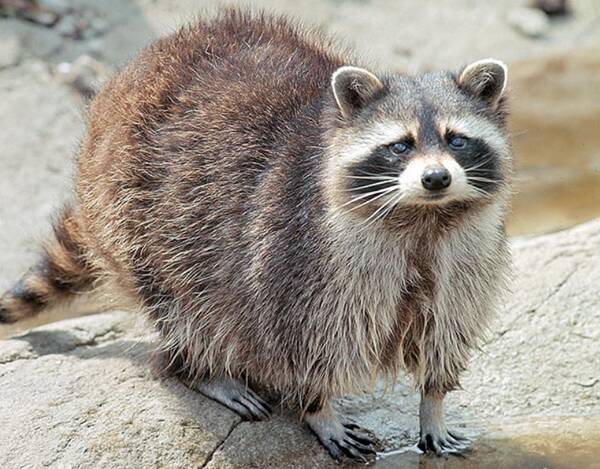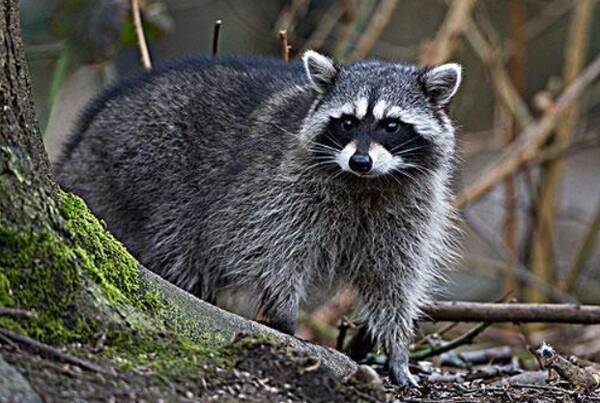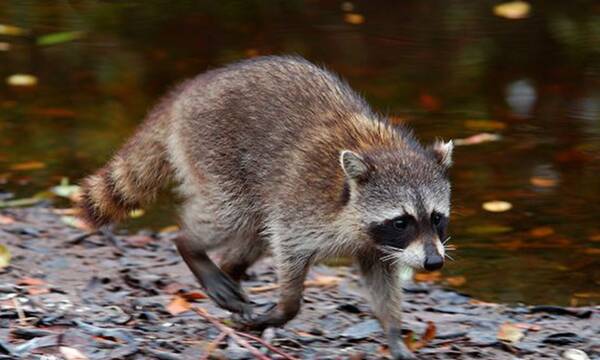Procyon lotor
IUCN
LCBasic Information
Scientific classification
- name:Procyon lotor
- Scientific Name:Procyon lotor,Raccoon, Food Thief, Pippi Bear
- Outline:Carnivora
- Family:Carnivora Procyonidae Procyon
Vital signs
- length:40-70cm
- Weight:3.5-9 kg
- lifetime:7-12 years
Feature
The most distinctive feature of a raccoon is the black area around its eyes, commonly known as "eye circles", which contrasts sharply with the surrounding white face color.
Distribution and Habitat
Raccoons are native to Belize, Canada, Costa Rica, El Salvador, Guatemala, Honduras, Mexico, Nicaragua, Panama, the United States and other North American regions. They are also found in Austria, Azerbaijan, Belgium, Czech Republic, France, Germany, Luxembourg, Netherlands, Russia, Switzerland, and Uzbekistan.
Raccoons must live near water sources. They prefer to live in humid forest areas, but can also live in farmland, suburbs, and urban areas.
Appearance
It is small in size, with slightly round ears and white fur on top. The color is usually yellow-brown with different shades, but some are brown, black, light yellow, and rare albino species. During the winter, the fur will grow to 2-3 cm. There are five toes on the front and back feet, and the toes are often separated, so they can grab things. The mouth originally had meat-chopping teeth, but they have evolved into teeth that can bite things. The raccoon has a long tail with black and white rings, and a few are yellow and white, about 5-7. The arboreal raccoon and the terrestrial long-nosed coati both have tail rings, while the long tail of the curly-tailed coati (more than 1.5-2.0 times the body length) has no rings, and the former's long tail is entangled.
Details
Raccoon, Procyon lotor (Linnaeus 1758), is a species of animal in the genus Procyon, family Procyonidae, order Carnivora, class Mammalia, native to North America, and now a species of least concern. Because it often preys on fish by the river and washes its food in the water, it is named raccoon.

Raccoons have very sensitive paws, which are rich in tactile cells. After contact with water, the sensitivity of the slow-adapting receptors on their paws increases, and raccoons can use their paws to measure the weight, size, material, and temperature of food. There are four subspecies of raccoons.
Bears usually build their dens in trees, but they also use groundhog caves or live in mines, wastelands, barns, garages, sewers or human houses.
Raccoons are "strong swimmers" and like to live in woods near rivers, lakes or ponds. They mostly move together in pairs or families. Raccoons mostly rest in trees during the day and come out at night. They often move around in trees and build their nests in trees. During the day, they sleep in hollow trees, rocks or holes in the ground. When they are tracked by black bears, they will escape to the treetops and hide. In winter, raccoons in the north will hide in tree holes to hibernate.

Raccoons are nocturnal animals. If they go out after midnight, Canadians call them mysterious thieves.
Although a carnivore, the raccoon is an omnivore. Its diet in spring and early summer consists mainly of insects, worms, etc. In late summer, fall and winter, it prefers to eat fruits and nuts, such as acorns and walnuts. Raccoons rarely eat active or large prey, such as birds and mammals. Raccoons prefer prey that is easier to catch, especially fish, amphibians and bird eggs.

Raccoons only form pairs during the breeding season. Male raccoons will mate with several females at the same time, but females generally only accept one suitor. Male bears, who are usually docile and peaceful, often shout and fight with each other during the mating season.
Listed in the 2012 IUCN Red List of Threatened Species ver 3.1 - Least Concern.








